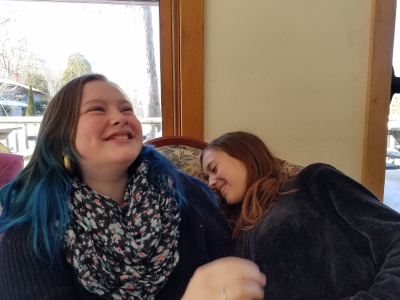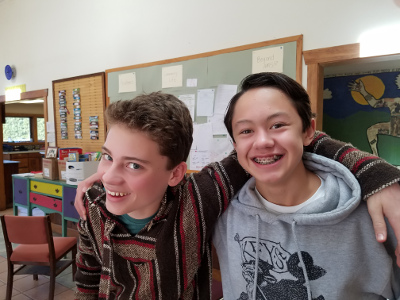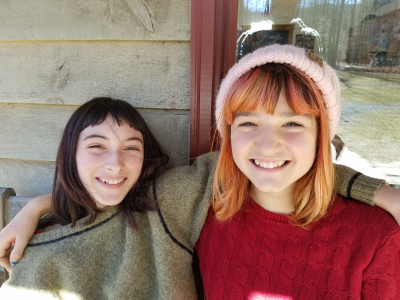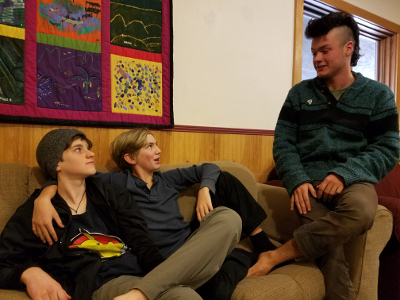Middle School Friendship Issues

When I first heard about some middle schools’ potential ban on best friends, I have to admit I was a little dismissive. Why were administrators putting themselves in the middle of middle school friendship issues? I didn’t believe the idea would catch on and thought it would be impossible to enforce. However, when Barbara Greenberg supported the idea in U.S. News and World Report and other news outlets began to add their commentary, I started to get worried. I wasn’t worried there would actually be a ban on best friends. Most of the stories did not support the ban and a poll from one Fox News outlet reported 96% of their viewers were against it.
No, what worried me was the commentary. A lot of the arguments against the ban talked about how exclusion is actually a good thing and can toughen up students to realities of life. Other stories focused on how the ban was just another example of helicopter parenting. What bothered me was that none of these articles focused on what makes having best friends powerful and important for middle schoolers. None of them talked about intimacy.
What about Intimacy?
Intimacy is a word not many parents want to associate with middle schoolers. A lot of us associate the word intimacy with sex and for many middle school parents, they want to hold out as a long as they can before dealing with that issue. Perhaps that’s part of the problem though. By not addressing intimacy bluntly, by making it something forbidden, we tie it to things it doesn’t need to be.
A best friend is an intimate relationship. You tell them your secrets, share you fears, let your walls down and really let them see you like no one else. It can be a powerful experience, especially for middle schoolers who spend most of their day feeling judged and insecure around their classmates.
 Practice makes Perfect
Practice makes Perfect
When a student is able to develop a best friend, they are able to practice what it means to be honest and vulnerable. They experience a positive relationship in which they feel safe, respected and heard. They recognize when they feel comfortable and when they don’t. As a result, they have a standard by to which compare any friendships and relationships (even romantic ones) they may build in the future.
This is not to say that best friends don’t come without drama. Best friends fight, they break up, they shift their alliances. Sometimes they make up and their friendship gets stronger; sometimes they call it quits and move on to new friends. These moments also prepare them for having more successful relationships in the future. Breaking up with someone is just as important a skill as being in a relationship. By practicing with a best friend, they learn how to trust their judgement in intimate situations and communicate their boundaries respectfully before the stakes are higher and bad decisions lead to direr consequences.
Intimate friendships also teach resiliency. As best friends break up and they form new friendships, middle schoolers learn that their self worth is not determined by their relationships. They feel more comfortable with change and believe more in themselves rather than the opinions of those around them.
But What About Exclusion?
So, what about Greenberg’s argument that best friends can lead to feelings of exclusion and long term trauma from being left out? It is a valid argument. Most of us can testify firsthand to the pain of being left out and feeling shunned. However instead of removing the possibility of intimacy by authoritative methods, another possibility is to include your middle schoolers in the conversation.
Communicating about Middle School Friendship Issues

At Arthur Morgan School, students have best friends. They also have social advisors. These adult mentors are there to help middle schoolers navigate the difficult times of adolescence, and a lot of what they deal with is middle school friendship issues. Just like at all middle schools, the students of AMS form close intimate friendships. Sometimes they become cliquish or exclusionary. Other students feel shunned by the group and left out. The school’s response though is not to terminate these friendships, but to talk with them.
By illuminating students in close friendships to the hurt feelings of the community around them, the social advisors demonstrate how intimate relationships can impact others. The students learn to work out the feelings of those who feel left out and create balance in how they spend their time with people. They don’t need to get rid of their best friend, just learn how to have appropriate boundaries. This skill will be an important one when they form relationships as they get older.
Learn More about AMS’s Social Advising Program
Creating a Inclusive School Community

Lessons about friendship are also often brought up in AMS’s All School Meeting. When unhealthy cliques form on campus, students address the issue directly by talking with each another and addressing how the cliques impact the school culture. The cliquish students can hear the effect of their actions and then have the opportunity to be part of the solution. They are able to create a school culture which is inclusive and allows for best friends.
Greenberg makes the case that having a best friend is a lost opportunity for other experiences that could have happened if you were spending your time with lots of people. I say that having a best friend is an opportunity–an opportunity to learn how to be intimate and be more considerate of others.
-By Nicholas Maldonado
